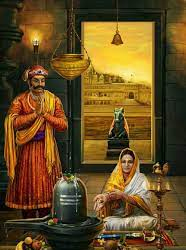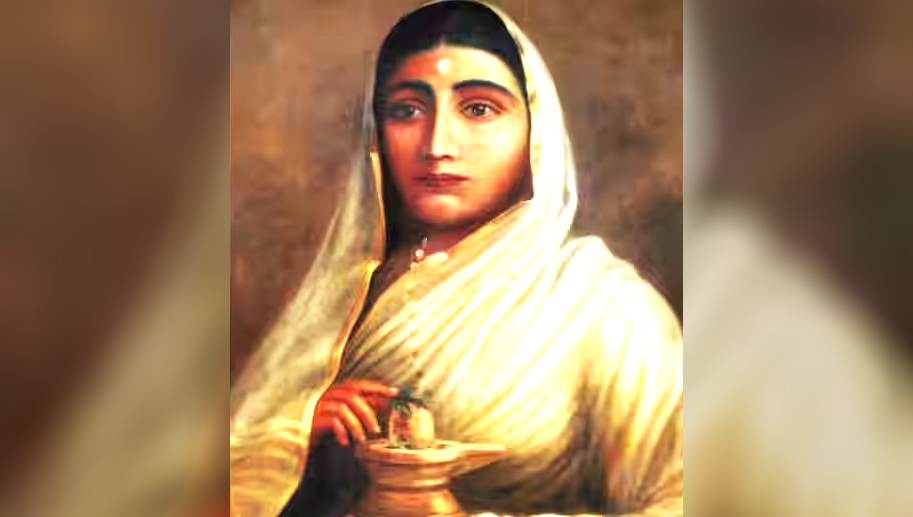Ahilyabai Holkar, also known as Rajmata Ahilyadevi Holkar, was a remarkable ruler who left an indelible mark on Indian history. Her story is a tale of courage, resilience, and compassion, as she navigated the turbulent waters of politics and governance to become one of the most beloved and respected leaders of her time.
 Born on May 31, 1725, in the village of Chondi in the present-day state of Madhya Pradesh, Ahilyabai was the daughter of Mankoji Shinde, a village chief. From an early age, she exhibited intelligence and a strong sense of responsibility, traits that would later shape her destiny.
Born on May 31, 1725, in the village of Chondi in the present-day state of Madhya Pradesh, Ahilyabai was the daughter of Mankoji Shinde, a village chief. From an early age, she exhibited intelligence and a strong sense of responsibility, traits that would later shape her destiny.
In 1733, Ahilyabai was married to Khanderao Holkar, the heir to the Holkar dynasty. The Holkars were Maratha chiefs and commanded considerable influence in the Malwa region of central India. Tragically, her happiness with Khanderao was short-lived, as he passed away in 1754, leaving Ahilyabai widowed at the tender age of 29.
Following Khanderao’s death, the Holkar throne passed to his father, Malhar Rao Holkar. Recognizing Ahilyabai’s exceptional qualities, Malhar Rao appointed her as the queen’s guardian and entrusted her with administrative duties. Under Malhar Rao’s mentorship, Ahilyabai honed her skills in governance and diplomacy, gaining a reputation for her wisdom and efficiency.
In 1766, Malhar Rao Holkar passed away, and his son, Male Rao Holkar, succeeded the throne. Unfortunately, Male Rao’s reign was short-lived, and he, too, died after just a year in power. With the kingdom facing uncertainty and turmoil, the people of Malwa looked to Ahilyabai for leadership.
Despite being a woman in a male-dominated society, Ahilyabai fearlessly accepted the challenge and ascended the throne as the Queen of Malwa. Her coronation marked the beginning of a transformative era for the region. She was not only the ruler of a territory but also a nurturing mother to her people, and her reign would be characterized by benevolence, justice, and prosperity.
Ahilyabai’s governance was marked by her strong sense of duty and her commitment to the welfare of her subjects. She was deeply religious and a devotee of Lord Shiva, which influenced her governance and the policies she implemented. Under her rule, the kingdom experienced a period of stability and economic growth. She encouraged trade and commerce, improved infrastructure, and supported industries, thereby boosting the region’s economy.
Her devotion to the arts and culture was evident in the patronage she extended to artists, scholars, and architects. She funded the construction of numerous temples, ghats, and dharmashalas (resting places for travelers) across Malwa, leaving a lasting legacy of architectural marvels.
Ahilyabai’s rule was not without challenges. Her kingdom faced invasions from neighboring states, and she had to navigate through complex political alliances. Despite these obstacles, her determination and strong leadership kept her kingdom safe and secure.
Perhaps one of the most remarkable aspects of Ahilyabai’s reign was her deep concern for the welfare of her subjects, particularly the marginalized and disadvantaged. She was known for her accessibility to the common people, listening to their grievances, and ensuring justice was served. Her compassion extended to people of all castes and creeds, earning her the admiration and love of her people.
Ahilyabai’s fame as a benevolent ruler and an able administrator spread far beyond the borders of her kingdom. Even Emperor Shah Alam II of the Mughal Empire acknowledged her authority and granted her the title of “Holkar Maharani.”
In the year 1795, at the age of 70, Ahilyabai Holkar passed away. Her death was mourned by her subjects and leaders from across India. The legacy she left behind as a visionary ruler and a compassionate leader continued to inspire generations to come.
Ahilyabai Holkar remains an iconic figure in Indian history, celebrated for breaking gender barriers, promoting justice and welfare, and contributing to the cultural and architectural heritage of the region. Her life serves as a testament to the power of leadership, resilience, and humanity, leaving a lasting impact on the collective memory of the Indian people. Today, her memory is honored through various monuments, institutions, and commemorations, ensuring that her story and legacy live on for generations to come.




No Comments